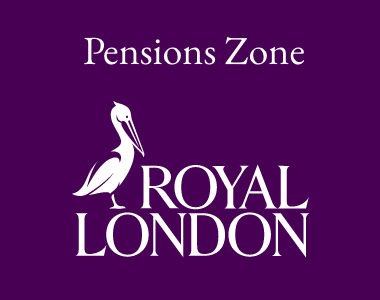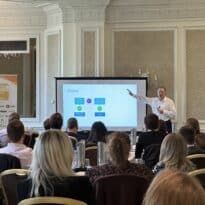Beth Joslyn, senior technical consultant at AJ Bell, explains how a client’s pre-commencement pension is accounted for under the current pensions tax rules.
Pre-commencement pensions are pensions which came into payment before 6 April 2006 (known as “A-day”). From this date new rules were introduced aiming to simplify the pensions landscape to make it easier for individuals to save and providers to administer schemes.
One of the key concepts introduced was the lifetime allowance (LTA) and transitional rules were implemented to account for pre-commencement pensions under the post A-day regime. These worked by reducing an individual’s available LTA at their first benefit crystallisation event (BCE) on or after 6 April 2006, usually when they took tax-free cash, designated funds to provide an income, or on reaching their 75th birthday.
With the LTA abolished from 6 April 2024, we have entered yet another new era for pensions. The LTA has been replaced by two limits governing the amount of tax-free cash which can be paid during life and after death: the lump sum allowance (LSA) and lump sum and death benefit allowance (LSDBA). As a result, further transitional provisions were needed, both for those benefits accessed under the LTA and those accessed pre A-day.
To understand how your client’s pre-commencement pension is accounted for under the current rules, you first need to check whether your client had a BCE between 6 April 2006 and 5 April 2024.
Where this is the case, the deemed lifetime allowance use calculated at your client’s first BCE will be included along with all other LTA use in the transitional calculation for their available LSA and LSDBA. This effectively assumes that 25% tax-free cash was accessed pre A-day, as well as at each BCE.
On 18 November 2024, the government introduced regulations altering this transitional calculation so that LTA used at age 75 may be disregarded if your client didn’t take a lump sum between their 75th birthday and 5 April 2024. However, any deemed LTA use in respect of a pre-commencement pension is not disregarded, so will still reduce available LSA and LSDBA.
Example
Frank started receiving a scheme pension in February 2006, when he was aged 60, paid by his defined benefits scheme. He chose not to receive any tax-free cash in exchange for a larger income.
Frank turned 75 in January 2021, at which point his scheme pension was £21,462 p.a. and he had a SIPP containing uncrystallised funds which were tested against the LTA under BCE 5B.
BCE 5B used up 20% of his LTA. As this was his first BCE since 6 April 2006, a further 50% LTA was deemed to be used by his scheme pension ((£21,462 x 25/£1,073,100) x100).
Frank now wants to take PCLS from his SIPP. He didn’t take any lump sums between his 75th birthday and 5 April 2024 so the LTA used by BCE 5B is disregarded.
Step 1: Calculate the equivalent amount
25% x 50% x £1,073,100 = £134,137.50
Step 2: LSA and LSDBA reduced by equivalent amount
LSA available = £268,275 – £134,137.50 = £134,137.50
LSDBA available = £1,073,100 – £53,655 = £938,962.50
Clients may consider if they’d benefit from a transitional tax-free amount certificate (TTFAC), allowing the LSA and LSDBA to be reduced by the actual amounts of lump sums taken post A-day, rather than assuming 25% tax-free cash was taken at each BCE.
However, any pre-commencement pension is still accounted for by deducting 25% of the amount deemed to have reduced the LTA at the first post A-day BCE. The actual amount of tax-free cash paid when it came into payment pre A-day isn’t considered, even if evidence is provided to confirm the amount – clients like Frank wouldn’t be better off. Your client is therefore only likely to benefit from a TTFAC if less than 25% tax-free cash was taken at a post A-day BCE.
Members who didn’t have a BCE before 6 April 2024 aren’t eligible to apply for a TTFAC, and the transitional calculation doesn’t apply as their pre-commencement pension wasn’t assessed under the LTA.
Instead, at their first relevant benefit crystallisation event (RBCE), either when taking a lump sum or a lump sum death benefit is paid from their pension for the first time on or after 6 April 2024, a deemed reduction to their available LSA and LSDBA will be calculated.
This calculation reduces their LSA and LSDBA by 25% of the capital value of the pre-commencement pension. The capital value is 25 x the annual rate of pension (ARP) in payment. ARP is calculated differently depending on the type of pension in payment:
- Scheme pension = 25 x annual pension payable at RBCE
- Annuity = 25 x annual pension payable at RBCE
- Capped drawdown = 25 x 80% of current maximum income that could be paid at RBCE
- Flexi-access drawdown = 25 x 80% of the maximum income that could be paid under capped drawdown when converted to flexi-access drawdown
Example
Hector receives a capped drawdown pension which began in March 2004. The maximum income is currently £20,000 p.a.
Capital value = 25 x 80% x £20,000 = £400,000
Deemed reduction = 25% x £400,000 = £100,000
LSA remaining = £268,275 – £100,000 = £168,275
LSDBA remaining = £1,073,100 – £100,000 = £973,100
Main image: mediamodifier-I3HPUolh5hA-unsplash































